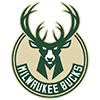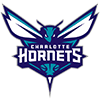This Week's Scouting Tip: Recognizing the Ticking Bomb
As we approach June, there is a good chance you will soon see a significant number of prospects making their major league debuts. How many times have you seen a pitcher make his major league debut in dazzling fashion, follow that up with another strong start, launching a stampede to the waiver wire to pick him up. Then, just after you somehow manage to grab the next Walter Johnson before your opponents can get the drop on you, Walter gets blasted in consecutive starts, he can't seem to throw strikes, and every strike he throws seems to end up in the next county, the wheels come off completely, and after single-handedly sabotaging your WHIP and ERA for weeks, Walter Brennan ends up back on the farm. How can that happen? How can a pitcher look so good for a few outings, and then totally disintegrate? Are there indicators that could have helped you avoid this all too frequent outcome? Let's take a look ...
Exploring it further:
Avoiding those ticking bombs can make a big difference in your fantasy season ...
Look at your roster at the end of a season. If you won your league or were at least in the hunt all year, chances are you added some key pieces along the way. Conversely, if you were out of contention, the pieces you added turned out to be broken. With regard to pitching, you might have grabbed a youngster coming
This Week's Scouting Tip: Recognizing the Ticking Bomb
As we approach June, there is a good chance you will soon see a significant number of prospects making their major league debuts. How many times have you seen a pitcher make his major league debut in dazzling fashion, follow that up with another strong start, launching a stampede to the waiver wire to pick him up. Then, just after you somehow manage to grab the next Walter Johnson before your opponents can get the drop on you, Walter gets blasted in consecutive starts, he can't seem to throw strikes, and every strike he throws seems to end up in the next county, the wheels come off completely, and after single-handedly sabotaging your WHIP and ERA for weeks, Walter Brennan ends up back on the farm. How can that happen? How can a pitcher look so good for a few outings, and then totally disintegrate? Are there indicators that could have helped you avoid this all too frequent outcome? Let's take a look ...
Exploring it further:
Avoiding those ticking bombs can make a big difference in your fantasy season ...
Look at your roster at the end of a season. If you won your league or were at least in the hunt all year, chances are you added some key pieces along the way. Conversely, if you were out of contention, the pieces you added turned out to be broken. With regard to pitching, you might have grabbed a youngster coming up who performed well for a large part of the year, or you might have bagged that deep sleeper who ended up closing when the guy who opened the year with the gig imploded.
There are several factors to consider when deciding whether or not the current "flavor of the month" kid pitcher can perform beyond the current month. Even if they looked like the real deal for their first few starts, most of the call-up phenoms will fade into obscurity - at least for the moment. The best way to gauge the likelihood of continued success is to see the pitcher pitch. That way you can see what you are getting. However, if that's not possible, there are a couple of other things to look for. Minor league stats can be misleading, but they can also be pretty useful if you take some things into consideration. Further, "pedigree" - was this pitcher drafted in the early rounds, or was he a highly regarded prospect as he came up through the minors - can at least provide you with a baseline for evaluating potential.
Minor league stats evaluation should begin with where they were playing, the pitcher's age/experience level relative to the league, and the actual peripherals they were generating. For example, be a little more forgiving of a higher ERA for a pitcher toiling in the hitter-friendly Pacific Coast League, be wary of a pitcher who was in his third season at Double-A resulting in him facing younger competition, and carefully analyze the hits allowed, home runs allowed, and perhaps most importantly, the strikeout to walk ratio and total strikeouts. I generally want to see a minimum of a 2:1 K:BB ratio (3:1 would be better) and at least close to a strikeout per inning. As for the "pedigree" factor, it's always a good idea to give the scouts who do this for a living appropriate credit for evaluating talent. Assuming the pitcher you are looking at didn't have any serious injuries to deflate his potential, and he has been making progress through the minor league tiers, there is every reason to assume there is something worthy of his valued prospect status.
Here are things to consider when evaluating the potential for long term success:
- One of the most important factors is K/BB ratio. Major league hitters typically excel at pitch recognition and knowledge of the strike zone. If a pitcher did not command the zone in the minors, especially if it was at the lower levels, that weakness is likely to be magnified at the MLB level. Fewer swings at pitches out of the zone and more patience can hobble a pitcher's long-term viability.
- If possible, watch the pitcher in his first few major league starts. You want to see exceptional velocity and/or movement, and a variety of at least three quality pitches he can rely on regardless of the count/situation. Hitters will be evaluating his repertoire and tendencies. He may be very successful in those first few outings, but they will adjust. He has to have the skill set to adjust as well.
- Those hitter adjustments can happen very quickly. In fact, the more quickly they happen, the more likely it is the pitcher will begin to struggle. Hopefully he will pitch deeper into his first start or two allowing you to evaluate the opposing hitter's approach and the quality of swings after they have seen him two or three times in the game. If there is marked improvement in contact and/or pitch recognition, that should be considered a serious red flag.
- Don't forget our "pedigree" factor. Occasionally a 17th round draft pick or a player toiling in the independent leagues will make a positive impact. It's rare. Far more likely, a pitcher drafted in the early rounds of a draft, and recently progressing through the team's minor league system will arrive with the tools to help beyond a start or two. If there are warning flags, even these top prospects could need more time to hone their skills, but if you take all the factors into consideration, you can hopefully grab the guy that can get beyond that "halo effect" success, and provide you with useful stats all season and well into the future.
Now, let's check this week's Scouting Notebook ...
This continues our weekly feature scouting pitchers of interest. We won't normally cover the elite guys in this column, rather this forum is dedicated to finding pitchers who might help, and more importantly, might be obtainable (as well as pitchers to avoid). Alright ... let's get started with this week's featured arms:
Jake Peavy (CWS)vs. CLE - Last July, Peavy became a living medical experiment. His malady was unique in the world of baseball injuries (and rare under any circumstances). Peavy had torn the latissimus dorsi tendon completely away from the bone. The actual prognosis, recovery time, and long-term impact on his career were all total question marks because there were no documented cases of an injury of this extent occurring to a professional pitcher. No past history, means no real way of knowing what to expect. Peavy worked with trainers and therapists who established very specific conditioning programs that have quite possibly built him back to a level beyond his physical abilities prior to the injury. He is, and probably always will be, a "max effort" pitcher. He puts everything he has into every pitch he throws, and that is often a pathway to injury. Given that approach, he is no guarantee to remain healthy, but Peavy might have the tenacity and drive to overcome just about anything, and that makes him especially intriguing.
Peavy is a paramount professional. However, he is even more difficult for hitters to figure out because he can pitch like both a power pitcher and a finesse guy. In truth, he is a power pitcher, but since he is so adept at changing speeds and locating a variety of pitches, he can shift gears and fool hitters as easily as he can blow them away. His repertoire consists on a variety of fastballs including a 2-seamer that fades away from left-handed hitters, and a 4-seamer. He will add a little hop as needed, and he can turn it over and generate some sink when he needs a groundball. He also throws a slider that will vary in speed by several mph, and he has a very good change delivered with the same fastball arm action. Finally, add the ability to change his arm slot by dropping to a nearly side arm delivery and you can understand why he can be so befuddling.
In our game against Cleveland, Peavy was using the whole arsenal, and he was using it on any count. As is his normal routine, he was throwing strikes all night, and that kept his pitch count well in hand - finishing with 111 pitches in the complete game shutout. Some might suggest that 111 is too many pitches for a pitcher coming back from an injury, but backing off is not a Peavy trait, and he reported no unusual soreness the day after.
On his final pitch, he hit 94 mph on the radar gun (he topped out there all night) and he struck out the final two batters he faced. He was on the black consistently, and as is his trademark, he kept the ball down before jumping up in the zone to change the hitter's eye level. He is unlikely to generate the lower San Diego earned run averages, as he will allow the occasional home run in this more hitter-friendly home, however he will provide a solid WHIP and should give you plenty of strikeouts. He might be an injury risk, with his injury only time will tell, but he has the upside to make the benefits worth the risk.
Homer Bailey (CIN)@ CLE - Bailey is one of those guys who came up to great fanfare, struggled, was sent back down, returned, struggled, was sent back down, etc. You know the drill. He had the "pedigree," but for the most part, he didn't have the repertoire. Early in his career, he walked way too many hitters and he had a tendency to give up big hits. Fantasy owners jumped on his bandwagon again and again, only to be disappointed. The first few years, Bailey was a thrower, and generally not a pitcher. He had a decent fastball, albeit a fastball that could be pretty straight, but his secondary pitches were unrefined and he rarely found them to be reliable options. Hitters recognized that, and they waited for the fastball that would sometimes get far too much of the plate.
Last season, Bailey began to show some progress. He cut the walk rate a bit and began to get his slider and curve over the plate with some regularity. Further, his strikeout rate increased. Still, with a 1.37 WHIP and a 4.46 ERA, he was of marginal value to most fantasy teams. He also missed time with a balky shoulder during 2010, and started 2011 on the DL with a shoulder impingement. That is probably of some concern.
Given the excellent start following his return from the DL, this was a good time to take a look at the 2011 version. In our target game, Bailey held the Indians scoreless for six innings before allowing a two-run home run to Travis Buck and ending up the loser in a 2-1 decision. He allowed four hits, did not walk a batter, and struck out four over seven solid innings. He displayed a smooth, repeatable delivery, however his fastball (at 91-94 mph) command was still a bit inconsistent and both his fastball and cutter are still straighter than you would like. On the plus side, he was generally throwing his curve and slider for strikes while using the fastball to set up the breaking stuff. That suggests maturity.
Maturity is the key for Bailey. He is learning to pitch and the positive results are coming with that evolution. He still needs a reliable change or a cutter with more bite to handle left-handed hitters so he is going to be more vulnerable against teams who can stack a lineup with quality lefty swingers. His command is improving, especially with his breaking pitches, but he is going to have to be more careful about leaving the fastball up. There are some positive signs, but he is not quite there, so expect his numbers to tail off, and don't be surprised if he continues to hit rough patches throughout this season.
Josh Collmenter (ARZ)vs. ATL - So let's take a look at a prototypical call-up starting pitcher who has gotten off to a brilliant start. Collmenter actually arrived in mid-April and made seven relief appearances before making his first start on May 14. Our target game against Atlanta was his second start. To say he got his MLB starting assignment off to a roaring start would be an understatement. He tossed six shutout innings in both starts and allowed no runs, no walks, and only four hits over the 12 innings. In the start against the Braves he threw 56 of 84 pitches for strikes, and came away with a 3-0 record, a 0.69 ERA and a microscopic 0.50 WHIP for the year. So how does he look long term?
Collmenter doesn't have that ideal "pedigree" having been drafted in the 15th round of the 2007 draft, probably because he doesn't have exceptional stuff with a fastball that sits 85-88 mph. So does that make him a risky pick-up for the future? Possibly, but in examining him a bit closer, what he does have is a very unique and deceptive delivery with excellent command of the strike zone. Collmenter throws directly over the top - almost unknown in today's game and something very few hitters will have faced. That alone makes him intriguing. However, a major concern is his limited arsenal of a high 80's fastball and a high 70's change (he also throws an occasional high 60's 12-6 curve but it is still inconsistent). On the plus side, he controls both pitches very well, he moves the ball in and out, and he makes sure anything up is above the hitting zone.
While Collmenter has enjoyed success, there are negative factors. In our game, he was keeping hitters off balance. His motion is identical for the fastball and the change so he often had hitters out on their front foot, generating a lot of pop ups. However, by pitching just six innings, he faced just two batters over the minimum and he didn't have to deal with the critical third and fourth plate appearance when they might have had a chance to adjust their timing. Further, with a high 80s fastball he doesn't miss a lot of bats so his strikeout totals are likely to remain low. He will need to refine that curve so he has a reliable third pitch, and he will need to continue to hit his spots to remain effective - both are challenges when it's on the job training. While I love his motion and sincerely hope he continues to be successful, it won't be easy. Ride his overhand motion the first time through the league, but be prepared to jump off when hitters begin to time his offerings.
Some short takes:
Erik Bedard (SEA)- We discussed him in an earlier Notebook, but it's time to update our optimism. Bedard is pitching as well, or better, than he did during the glory days in Baltimore so many years ago. That equates to a front-of-the-rotation starter in fantasy leagues. Sure, there is risk of injury, but the reward is too high to pass up.
Josh Johnson (FLA)- Johnson was placed on the DL with shoulder inflammation over the weekend, and that is a huge blow to the Marlins and to his fantasy owners. Any shoulder soreness is a concern, but Johnson missed time late last season with shoulder problems so it's more disturbing. Hopefully it's not serious, but monitor this situation.
Brandon Morrow (TOR)- He has been struggling a bit since coming off the DL resulting in higher pitch counts and being uncharacteristically hittable. He isn't changing speeds very well right now (his change is a rare offering) and he is up too often with his fastball. It's still there so list him as a very good buy low candidate.
Brandon McCarthy (OAK)- He was pitching fairly well early this season, but he has returned to the DL with shoulder problems. Like Johnson, this latest injury is virtually the same as those he has experienced in the past. However, unlike Johnson, McCarthy's shoulder problems stretch back to the earliest days of his career. Not a good sign.
Clay Buchholz (BOS)- He got off to a very shaky start, but his recent numbers have been considerably better. However, it could be of some concern that he was allowed to throw 127 pitches over just seven innings in his recent start against Detroit. He has the talent but he will need to be much more efficient to get fully back to a "reliable" status.
James McDonald (PIT)- He is likely to be inconsistent throughout the year, however he has the ability to throw a gem on any given day. While that makes him more risky in redrafts, his ceiling is very appealing for keeper/dynasty formats. It will be difficult to predict the best outings, but he is worth taking just in case he does get locked in.
Danny Duffy (KC)- Making his MLB debut, he showed both a lot of ability and a lack of command. In first starts with talented youngsters, it's generally best to focus on the ability and chalk the command issues up to adrenaline and jitters. He showed decent command in the minors so he is likely to settle down and be productive.
Andrew Bailey (OAK) - Bailey's rehab has been going smoothly and the A's hope to have him back later this week. When he's healthy, he's a top shelf closer, but he has a history of being a bit fragile. Just in case, you might want to have a look at Grant Balfour who may be close to supplanting Brian Fuentes as the primary alternative.
Ryan Madson (PHI)- Jose Contreras is due back from the DL soon, and while the Phillies would probably like to see Madson back in his set-up role, it would be difficult to justify that move based on his performance since taking over the closer's job. However, he is suffering from a sore hand so that could provide an opening for Contreras.
Vicente Padilla (LAD)- He probably wasn't a great choice to close in any event, and now he is on the DL. Kenley Jansen remains the best "tools" option, but his command issues could lead to Matt Guerrier getting the majority of the save chances. Padilla is expected back fairly quickly, but this could be an ongoing shuffle.
Kid's Corner ...
Mike Montgomery (KC)- A very talented lefty, Montgomery is still erratic with his command, however he should not be overlooked when you consider young pitching prospects. He features an excellent fastball with plenty of hop (94-96), a respectable cutter, a devastating 12-6 curve in the mid 70s, and a developing change-up. For him, it's all about location. When he gets it all in synch he has a top-of-the-rotation ceiling.
For some of the most in-depth coverage of all things pitching in fantasy baseball for 2011, visit www.bogfella.com and be sure to follow @RotoWire and @bogfella on Twitter.
























